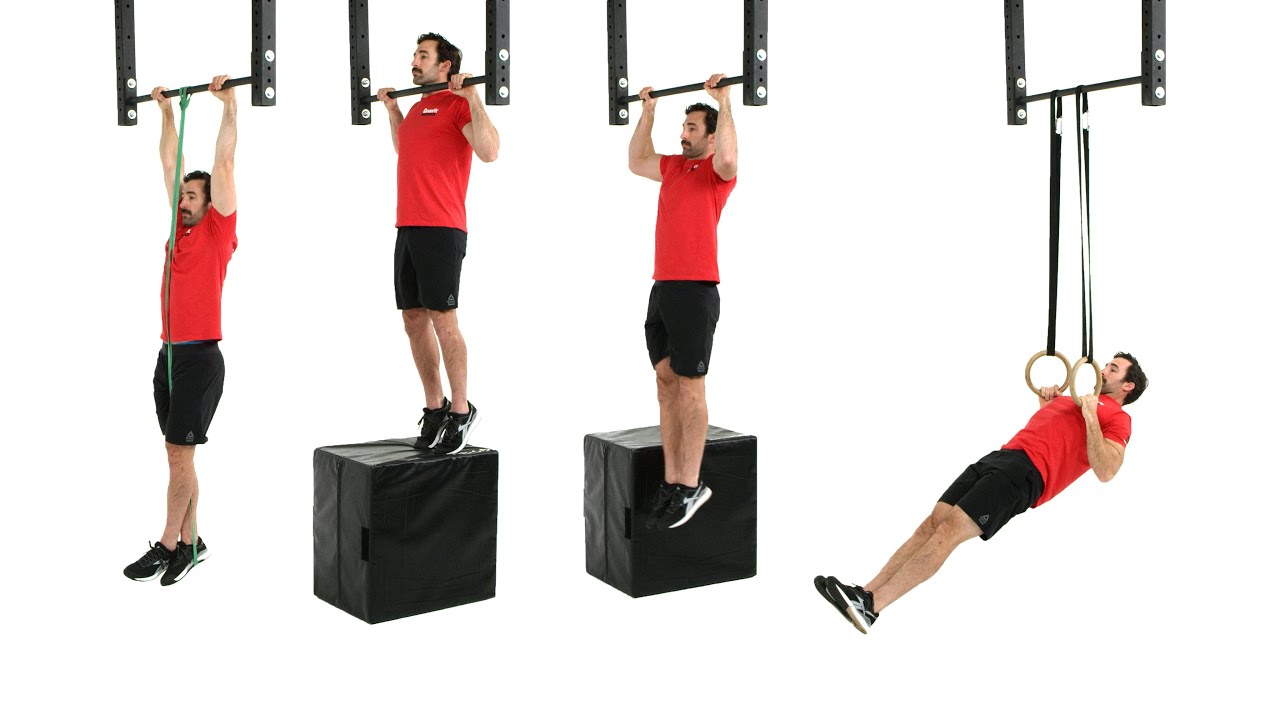Scaling vs. Substitution
by Erik Castiglione
While I was reading one of the CrossFit Affiliate Owners forums on Facebook last week, someone asked the question: “What’s a good test of handstand push-up capacity?” A well known CrossFit business guru, who shall remain nameless because I don’t want to give him any press, chimed in with “Tempo Z-press.” I HATE answers like this, and you see them in online forums all the time.
“I’m looking for a dog breeder, any suggestions?” And you get the inevitable “GRRRRRR! DON’T GOT TO A BREEDER! THERE’S HUNDREDS OF RESCUES OUT THERE!” Seriously, fuck off with that. Spare us your sanctimony, you know nothing about the asker’s situation, and if you’re not going to answer the actual question, then shut up and keep your opinions to yourself. </rant>
Back to the original post – aside from triggering me by not answering the question, the guru proposed a substitute movement. This brings up the topic of substitutions vs. scalings. What’s the difference, and when should you use them? Simply put, a scaled version of a movement is the same MOVEMENT PATTERN, with a reduction in load, volume, or range of motion. In other words, we can use lighter weights, fewer reps, or in the case of handstand push-ups, use Abmats under our heads or put our feet on boxes. A substitution, on the other hand, is using a different movement that works (hopefully) the same muscles.
Wherever possible, we want to scale first, and substitute as a last resort. Going back to the handstand push-up example, let’s break down the movement. As the name states, the full version of the movement requires an athlete to be INVERTED, in a handstand. The athlete then lowers themselves down until their head touches the ground, and presses back up into a handstand. This pressing action requires engagement of the athlete’s triceps and deltoids. To make the press easier, the athlete will use universal muscle recruitment, and keep their cores and legs rigid. It’s easier to move a rigid object than one that has some give to it – think about pushing a box vs. a sandbag. So, to summarize, the handstand push-up requires:
-A pressing motion
-An activate core
-An inverted body position
Let’s look at some scaling options for handstand push-ups. We have:
- Handstand push-up with 1 Abmat
- Handstand push-up with plate/Abmat combination or multiple Abmats
- Piked handstand push-up with feet on box
- Piked handstand push-up with knees on box
- Handstand hold
- Dumbbell press (standing or Z-press)
Options 1-4 all require a pressing motion, an active core, and an inverted body position. Option 5 still requires a tight core and inverted position, but it’s removed the pressing motion. Option 6 requires a tight core and a pressing motion, but we’ve removed the inversion. For this reason, options 5 and 6 are considered substitutions, rather than scalings – they don’t meet the same movement criteria.
Why does it matter? In our “What We Train” series, we covered both strength and skill development. To be an efficient mover, we need BOTH. So, we want to keep ALL movement criteria wherever possible. In keeping with handstand push-ups, if we have an athlete who has vertigo or can’t get inverted for some other reason, then of course we will substitute the movement. But, if we immediately resort to DB pressing, we’re only developing strength, and ignoring the skill component of the movement. Skills are neurological and can only be developed through practice. Assuming the athlete is participating in a well rounded program (like ours!), they’ll develop pressing strength in other movements, so there’s no reason to focus ONLY on the strength component.
Muscle-ups are another great example of this. According to crossfit.com, if you can’t do a muscle up, you should substitute 3 pull-ups and 3 ring dips PER muscle up in the WOD. Once again, this is great for building stamina and strength, but it ignores the key part of the muscle-up: the transition. That’s a skill that needs to be practiced. So, we allow athletes to perform banded muscle ups and jumping muscle ups in WODs. They still get some strength work in, and they get to practice the skill component as well. It’s the best of both worlds.
Generally speaking, we want to scale rather than substitute. Unless the athlete has a injury or some other issue that precludes a specific movement pattern, we want to preserve as much of the pattern as possible. Keeping that in mind, here’s a list of some advanced gymnastics movements and their scaling progressions:
Handstand Push-up:
Deficit Strict Handstand Push-up
Deficit Kipping Handstand Push-up
Strict Handstand Push-up
Kipping Handstand Push-up
Strict, Partial ROM Handstand Push-up
Kipping, Partial ROM Handstand Push-up
Piked Handstand Push-up, Feet on Box
Piked Handstand Push-up, Knees on Box
DB Z-Press
Standing DB Press
Ring Muscle-up:
Strict Ring Muscle-up
Kipping Ring Muscle-up
“Ring Thing” Muscle-up
Jumping Ring Muscle-up
Banded Muscle-up Transition
Pull-up/Dip Combination
Bar Muscle-up:
Strict Bar Muscle-up
Kipping Bar Muscle-up
Bar Muscle-up with Band Assistance
Jumping Bar Muscle-up
Jump to support hold on low bar (Yoke)
Pull-up/Dip Combination
Pistol Squat:
Pistol
Pistol with heels elevated
Rolling Pistol
Pistol while holding band
Pistol to a horizontal band
Pistol to a box (partial ROM)
Narrow Stance Squat
Toes to Bar:
Strict Toes to Bar
Kipping Toes to Bar
Strict Knees to Elbows
Kipping Knees to Elbows
Strict Straight Leg Raise to Horizontal
Kipping Straight Leg Raise to Horizontal
Strict Knees to Chest
Kipping Knees to Chest
Strict Knees to Waist
Kipping Knees to Waist
V-ups
Supine Leg Raises
Hollow Rocks
Hollow Hold
Pull-ups:
Strict Chest to Bar
Kipping Chest to Bar
Strict Chin Over Bar
Kipping Chin Over Bar
Strict with band assistance
Jumping
Ring Rows

